Bideford Angling Club start their series of Summer Junior Events this Saturday. Well worth supporting and really good for young people to get involved.
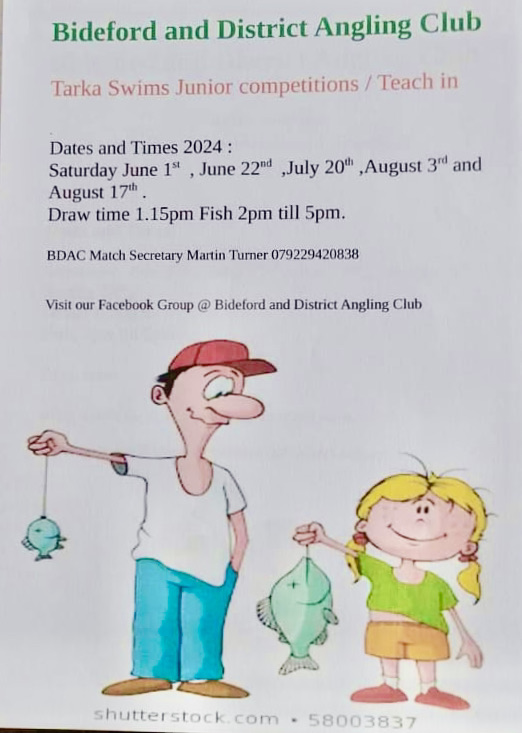

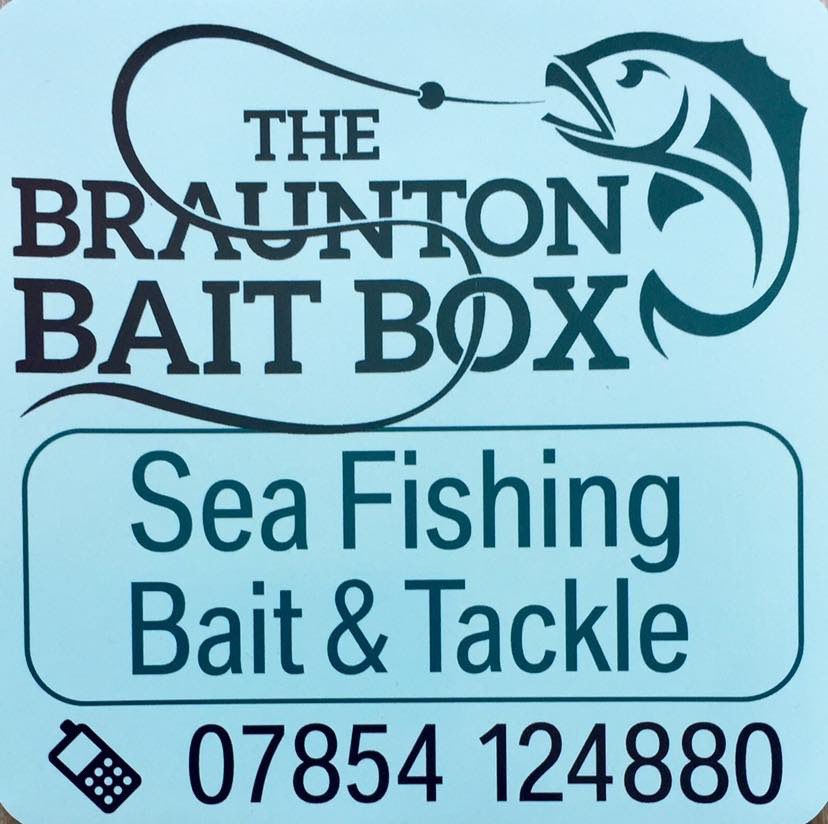
Chew Valley Lakes reputation was further enhanced this Spring with the capture of a British Record pike scaling 47lb 5oz. I have fished the lake on and off for over twenty years and enjoyed a mix of success and failure at the venue.
I joined my good friend Bruce Elston for a day with the fly rod. The weather forecast had looked good with a moderate North West Breeze and no rain. I arrived at the lake just after 9:00am and we chatted to fellow anglers as we loaded our gear onto the boat. It appeared that the fishing had been hard going. Undeterred we set out for our chosen area searching the water casting our big flies in ten foot of water. With a drogue controlling our drift we covered water at a steady pace.
There was suspended algae present in the water and visibility was not as good as on some previous visits. On the first drift we had a couple of follows and pulls which was encouraging.
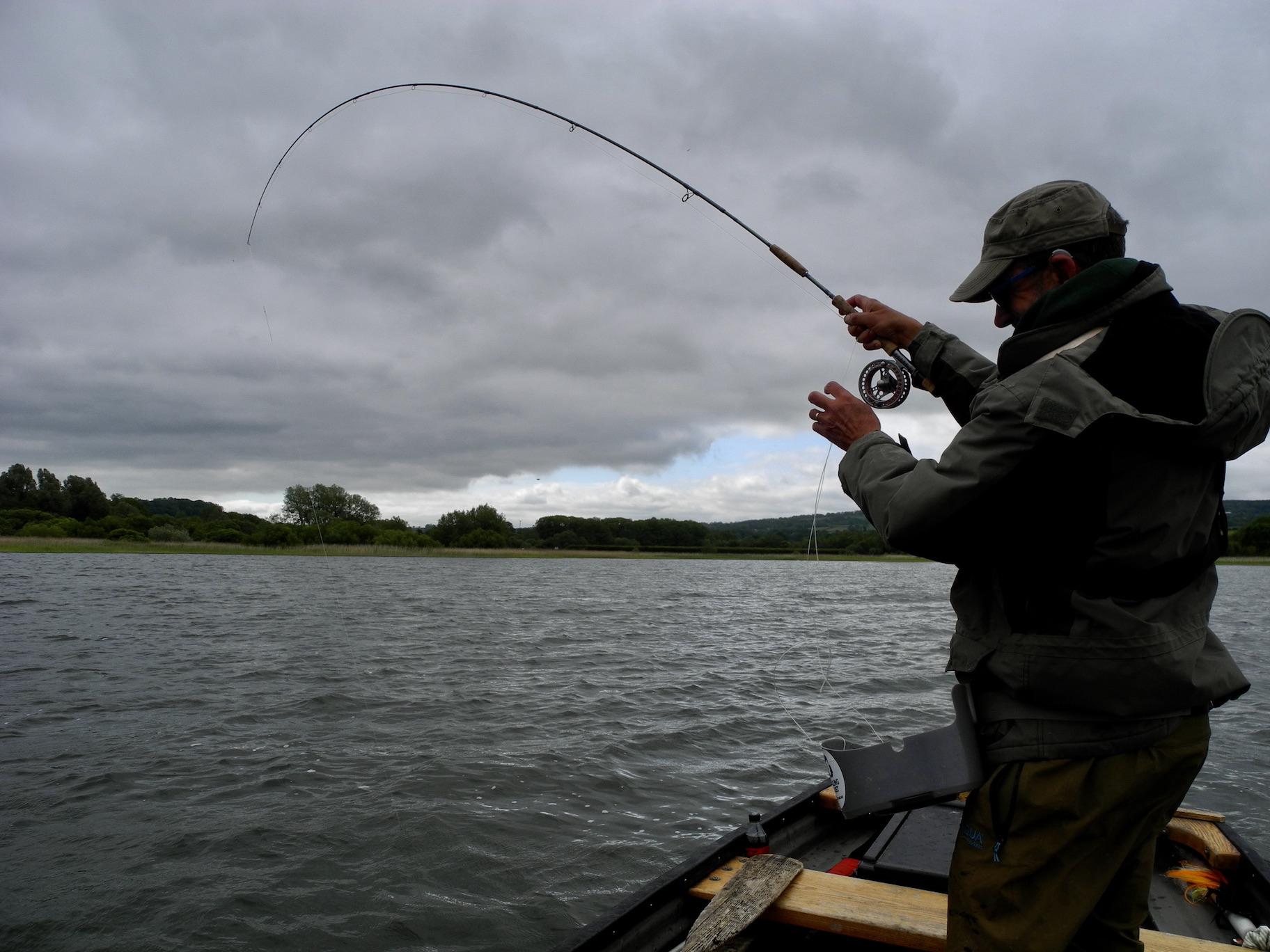
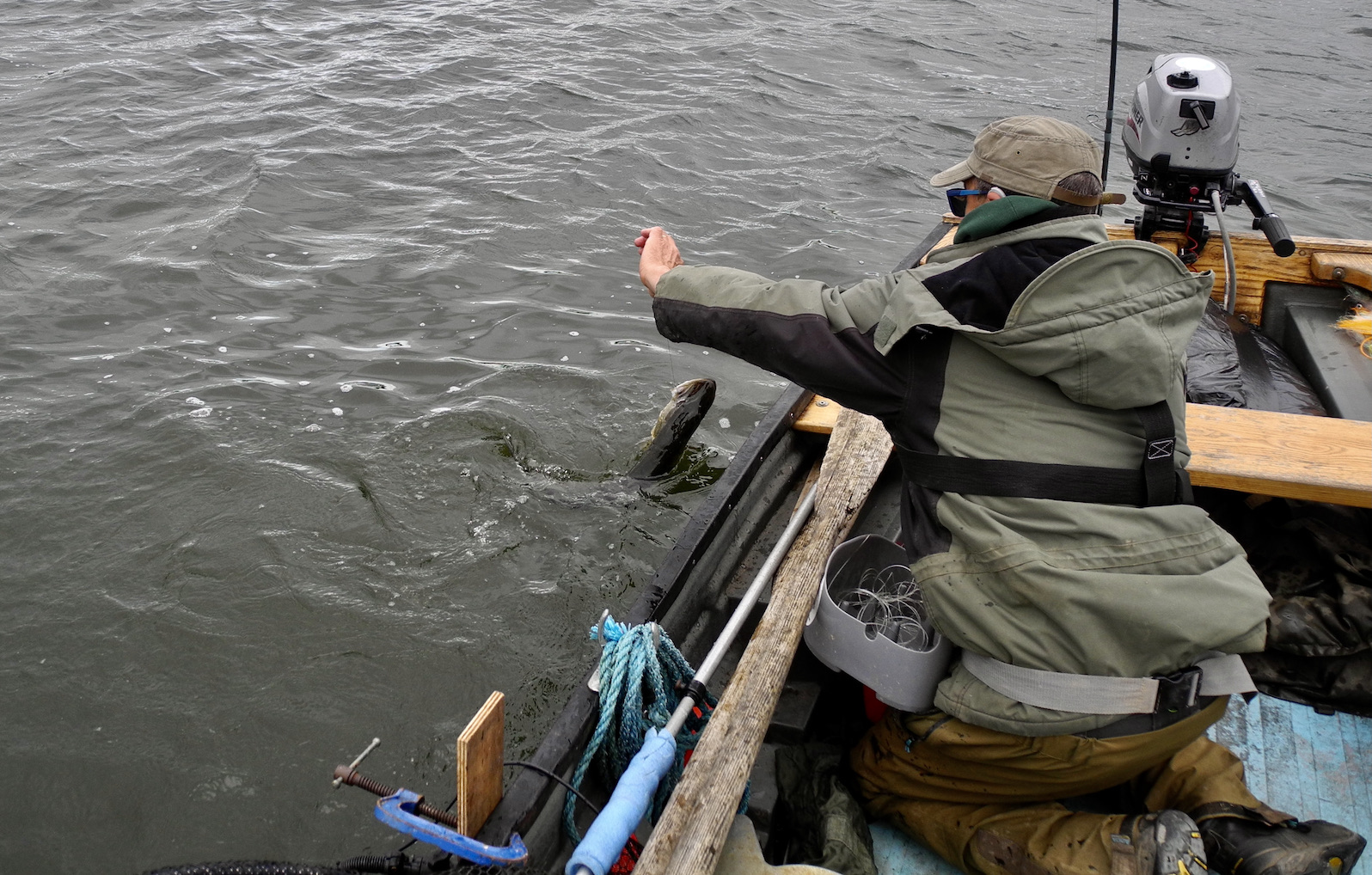
Next drift Bruce hooked into a jack of around 4lb which boosted our confidence. On the next drift it was my turn and I brought a jack of around 4lb to the boat nothing big but at least we were catching. The next couple of drifts resulted in a couple of missed takes and a micro jack for Bruce.
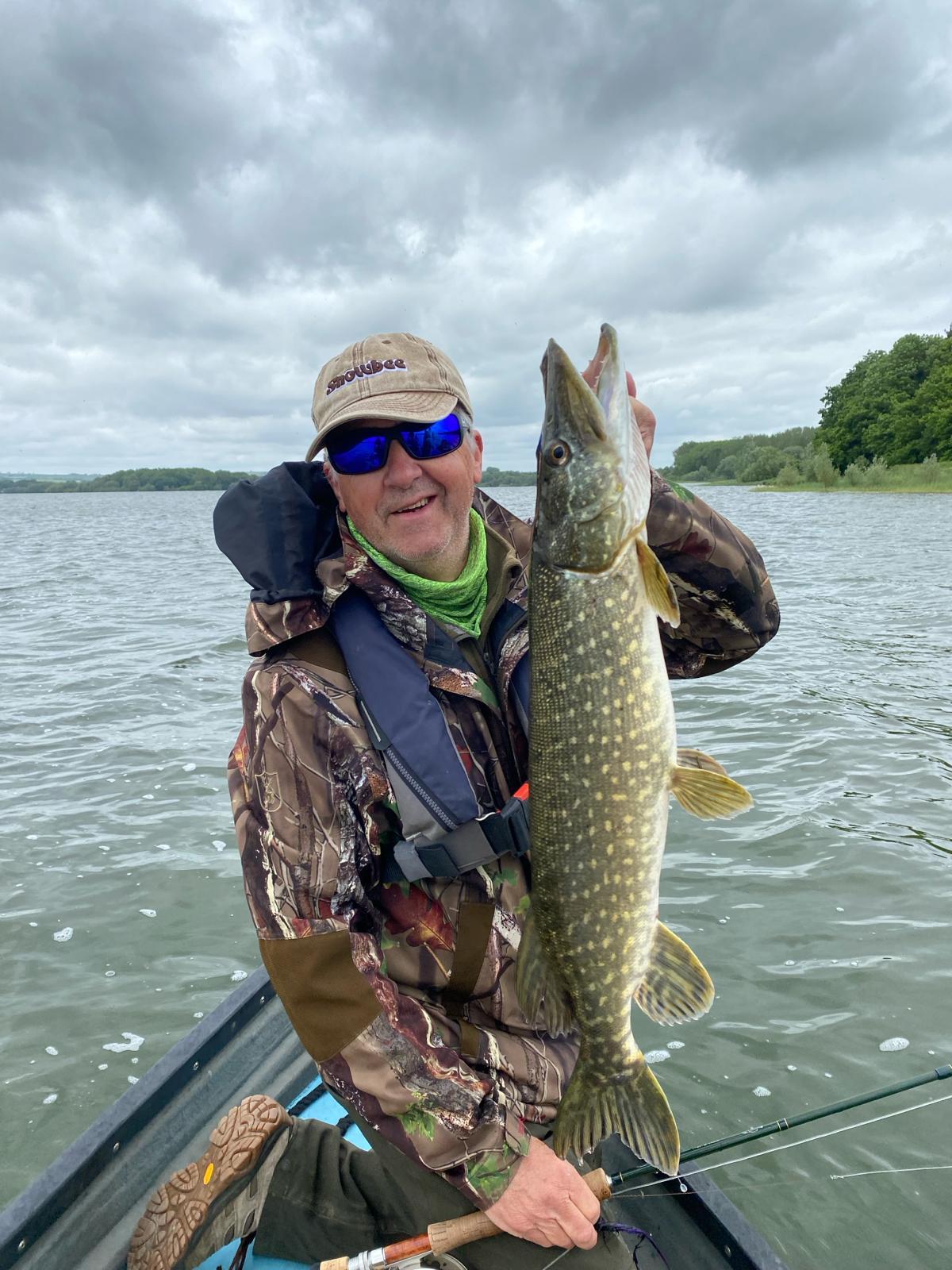
As the day raced past takes dried up as they often do during the afternoon. Hundreds of swifts were swooping over the water undoubtedly feasting upon insects. To our surprise throughout the day we saw only a couple of trout rising which for late May was perhaps a little strange.
With wind increasing and action non-existent we decided to head for shelter and enjoy an early evening snack. In a sheltered bay I lit the stove and fried up a dozen chipolata sausages. Bruce put out a team of buzzers whilst he waited for the culinary delight of a sausage sandwich.
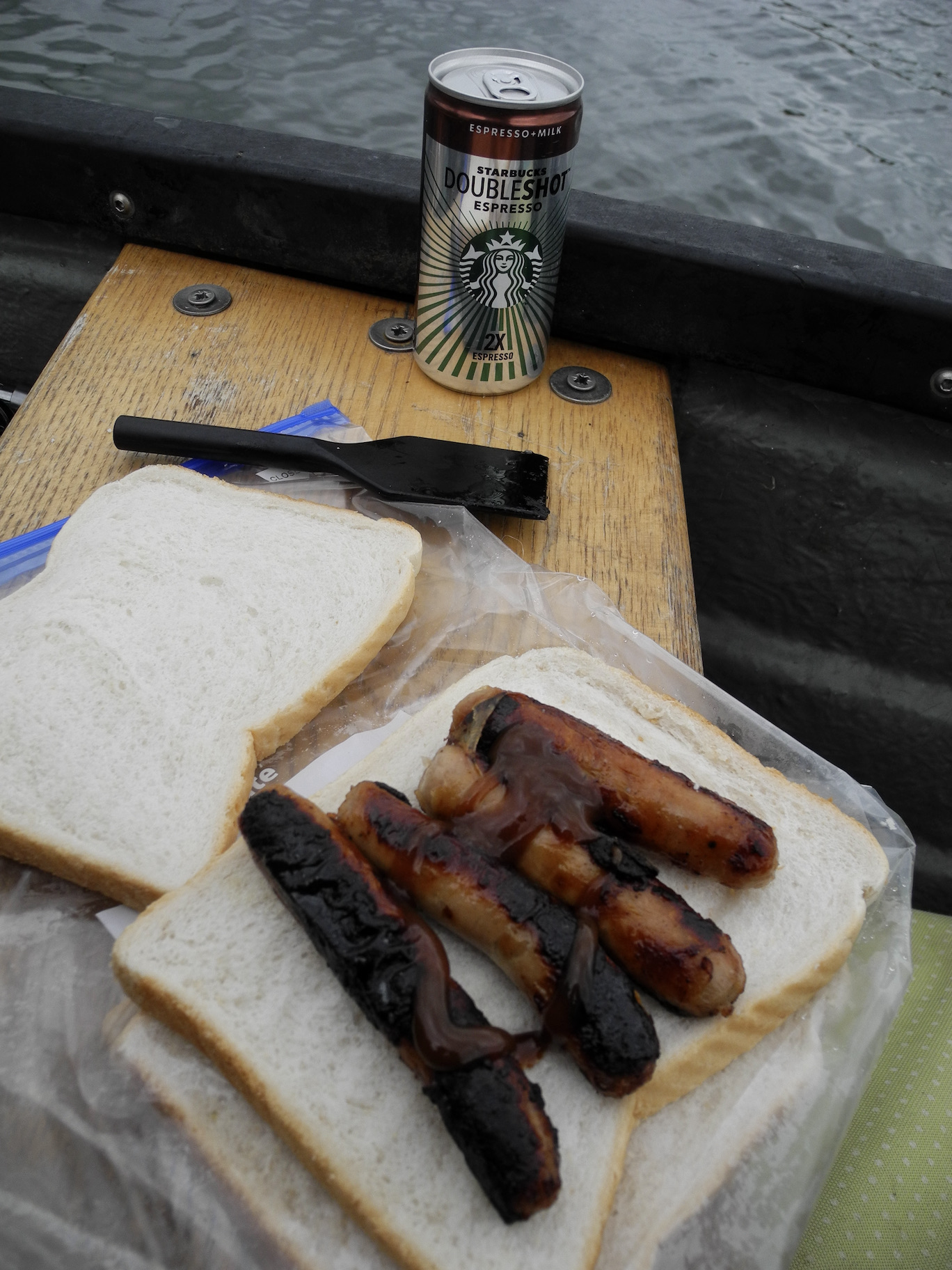
The sun broke through momentarily bathing the bay in evening light. We resumed our search for a while in the bay before once again heading back to the main expanse of the lake. I tempted another micro jack on one of Rodney Wevil’s bright orange scruffy tigers.
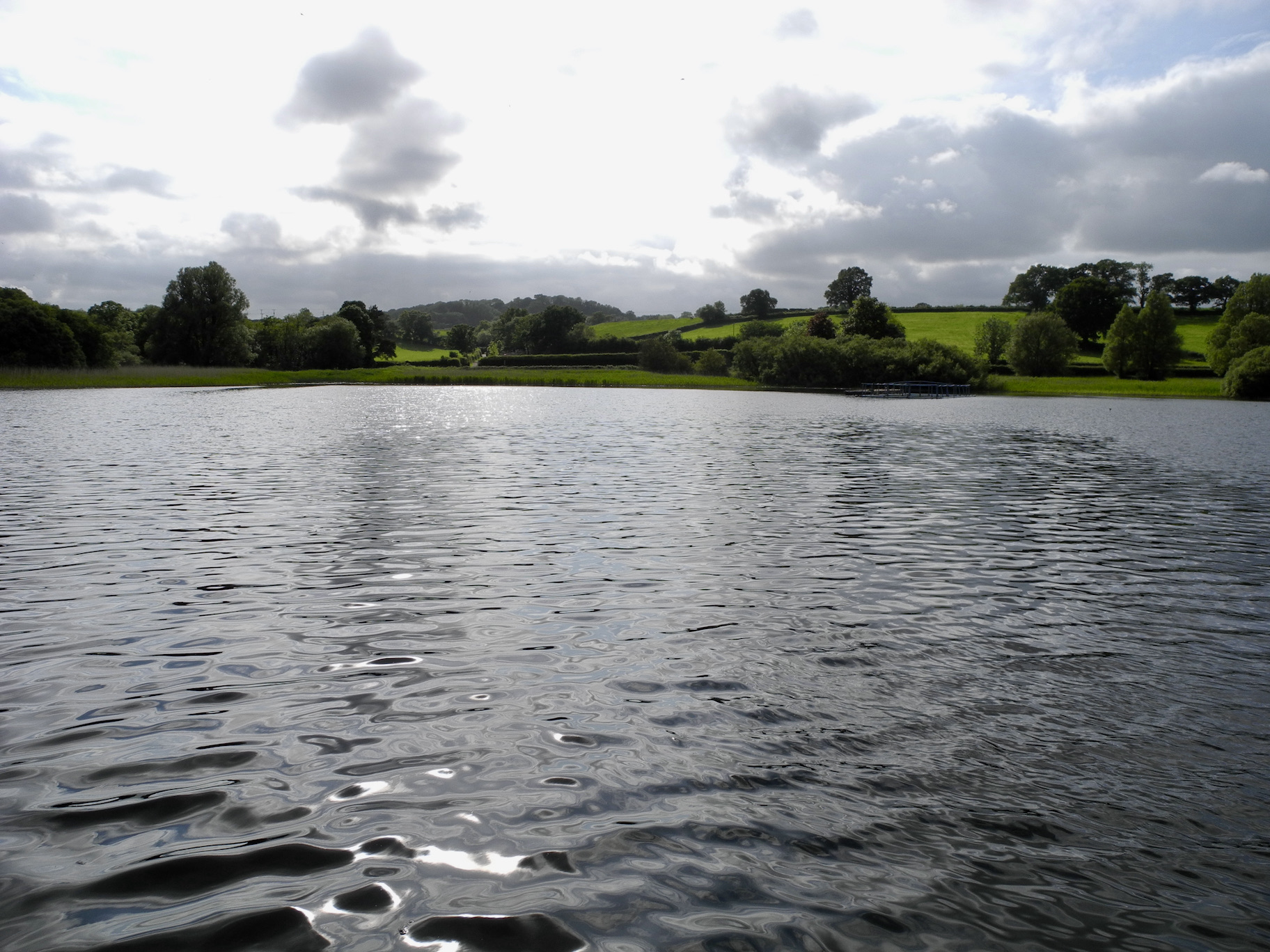
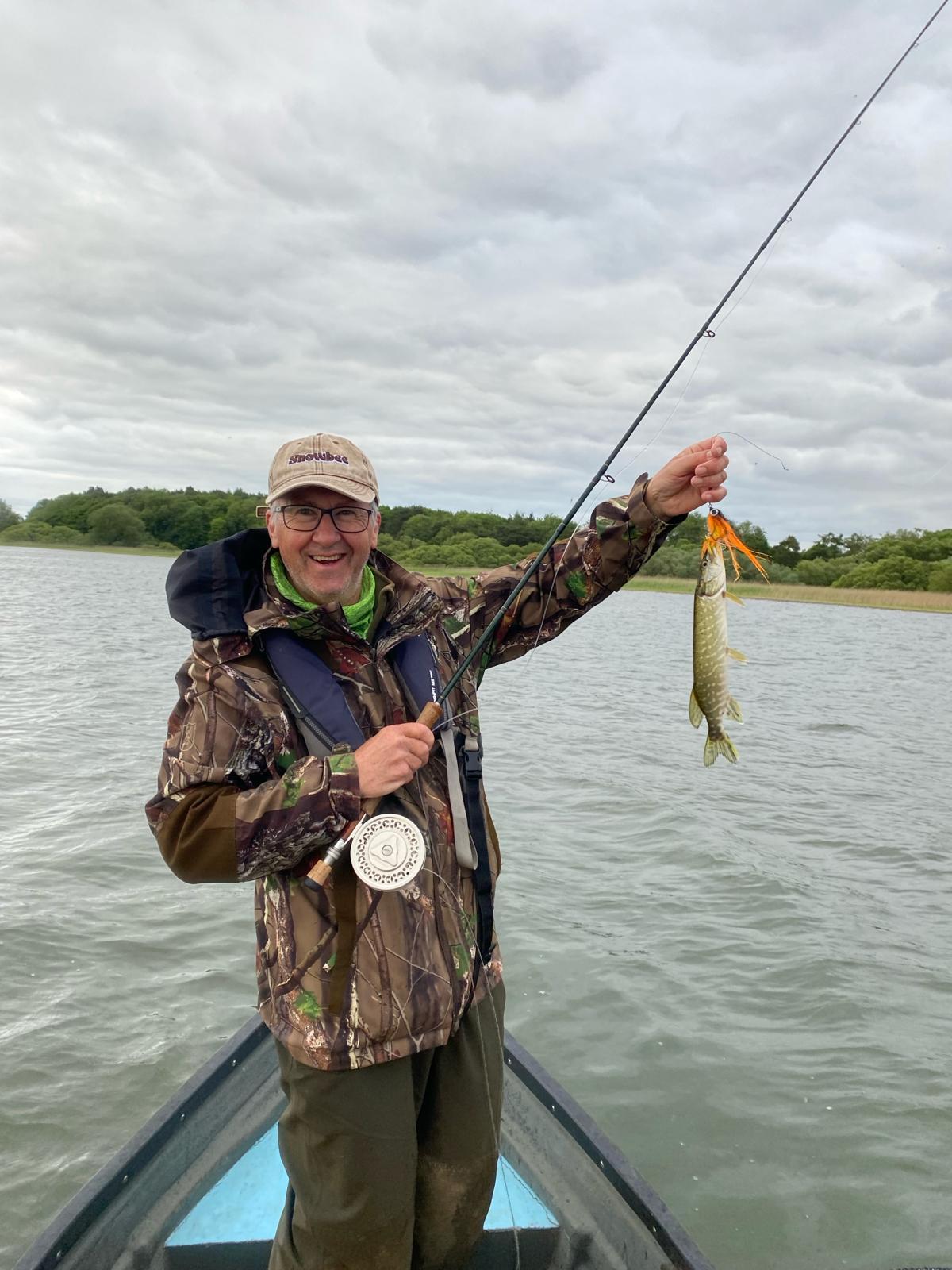
As the light faded from a late Spring day we had several last drifts eventually conceding defeat at 20:45.
We had made many casts during close to nine hours of fishing at a guess I reckon we notched up close to a thousands casts in the day.
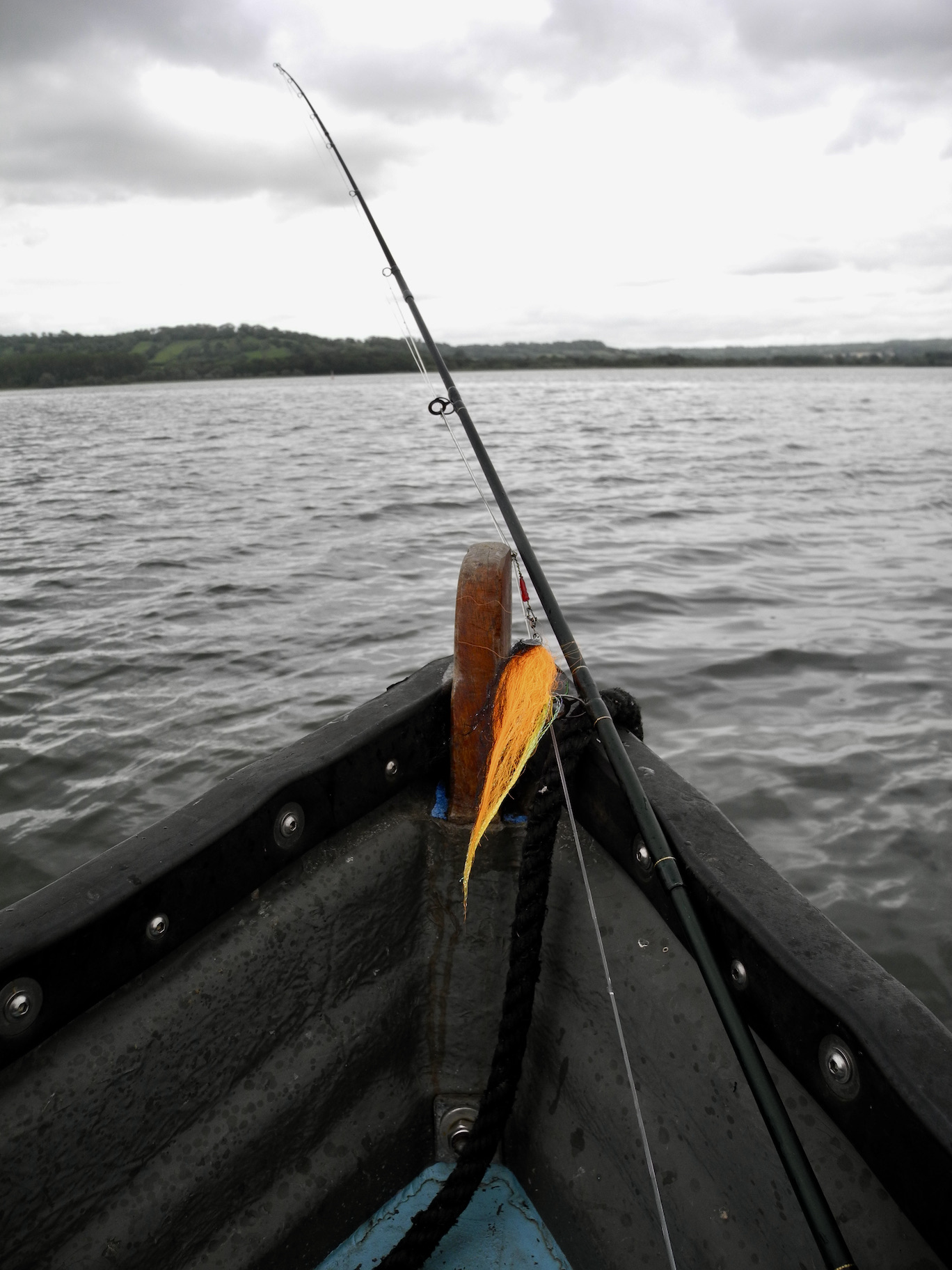
Chew Valley Lake can be hard; its draw is of course that the next cast could bring that fish of a lifetime. I was fortunate to catch that fish a couple of years ago so I know it can happen. Maybe next cast?
Pike fishing seems to follow a natural cycle with each year slightly different. There seems to be an explosion of micro jacks this year with a few very large fish and low numbers of medium sized pike. The lake is large however and will always hold mystery and just maybe another British Record. A fifty ?
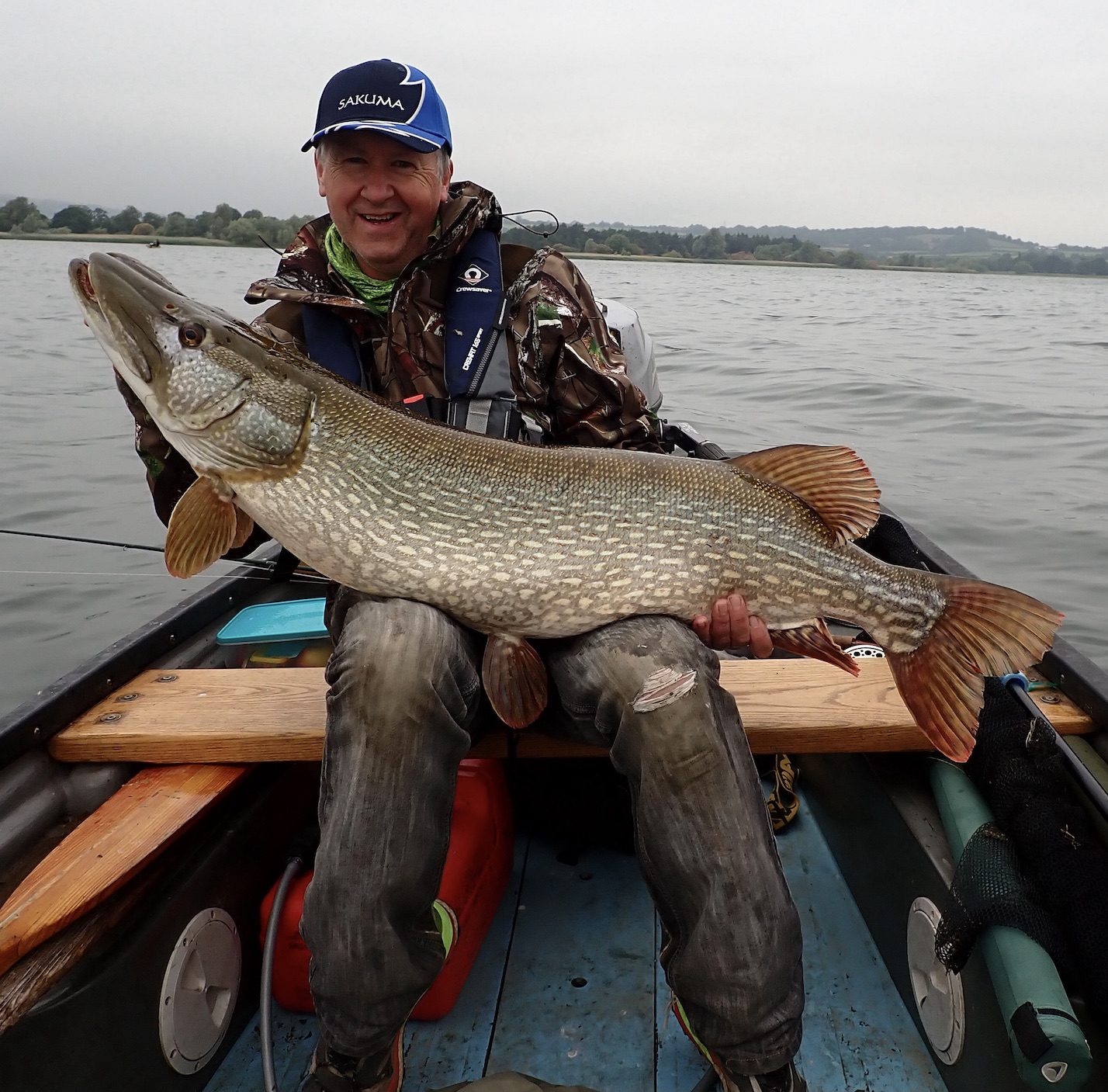
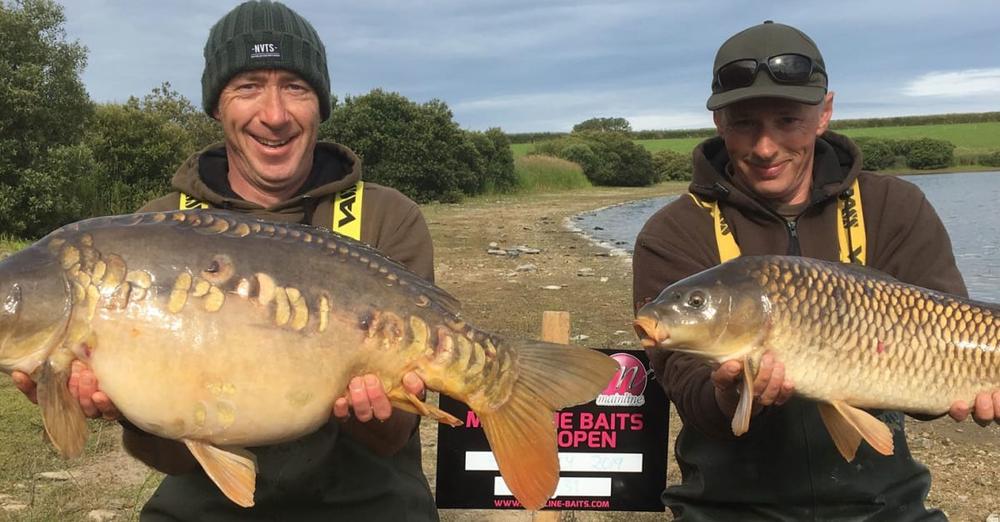
The Mainline Baits Carp Pairs competitions are held at our 81 acre fishery, Upper Tamar Lake. The competitions are generously sponsored by carp fishing giants Mainline Baits.
There is £3,500 in prize money from South West Lakes Trust for each competition. Each person who enters will get a goody bag with some fantastic Mainline products inside.
This year there is an exciting new rule change regarding the way the final results are taken. This year, instead of all the fish a pair catch being weighed in and this being your final result, the three biggest fish from each pair will be added together and this will be your final result. So, any fish that are smaller than the three biggest a pair has caught already through the competition can be put back straight away and do not require weighing in. But if a fish is bigger than your previous three recorded fish then it will be weighed in. This way it will make the competition more open to anyone winning.
All tackle and equipment is transported to and from your swim. There is also a full menu for the weekend with food delivered directly to your swim!
2024 dates:
The competition is limited to 34 pairs. You can book your place online below.
For further information contact us on 01566 771930 or [email protected]
Mark Drewer has taken the lead in Combe Martin SAC’s Bass lure league tempting bass of 67.5cm and 63cm. Both fish were tempted on a white gravity stick pulse tail.https://www.highstreettackle.co.uk/savage-gear-gravity-stick-paddletail-14cm-15g-5627-p.asp As we go into summer proper I am expecting catches to pick up. At present Mark Drewer is in first place with two bass for 130.5cm. Second is Reece Woolgar with two bass for 118.5cm.
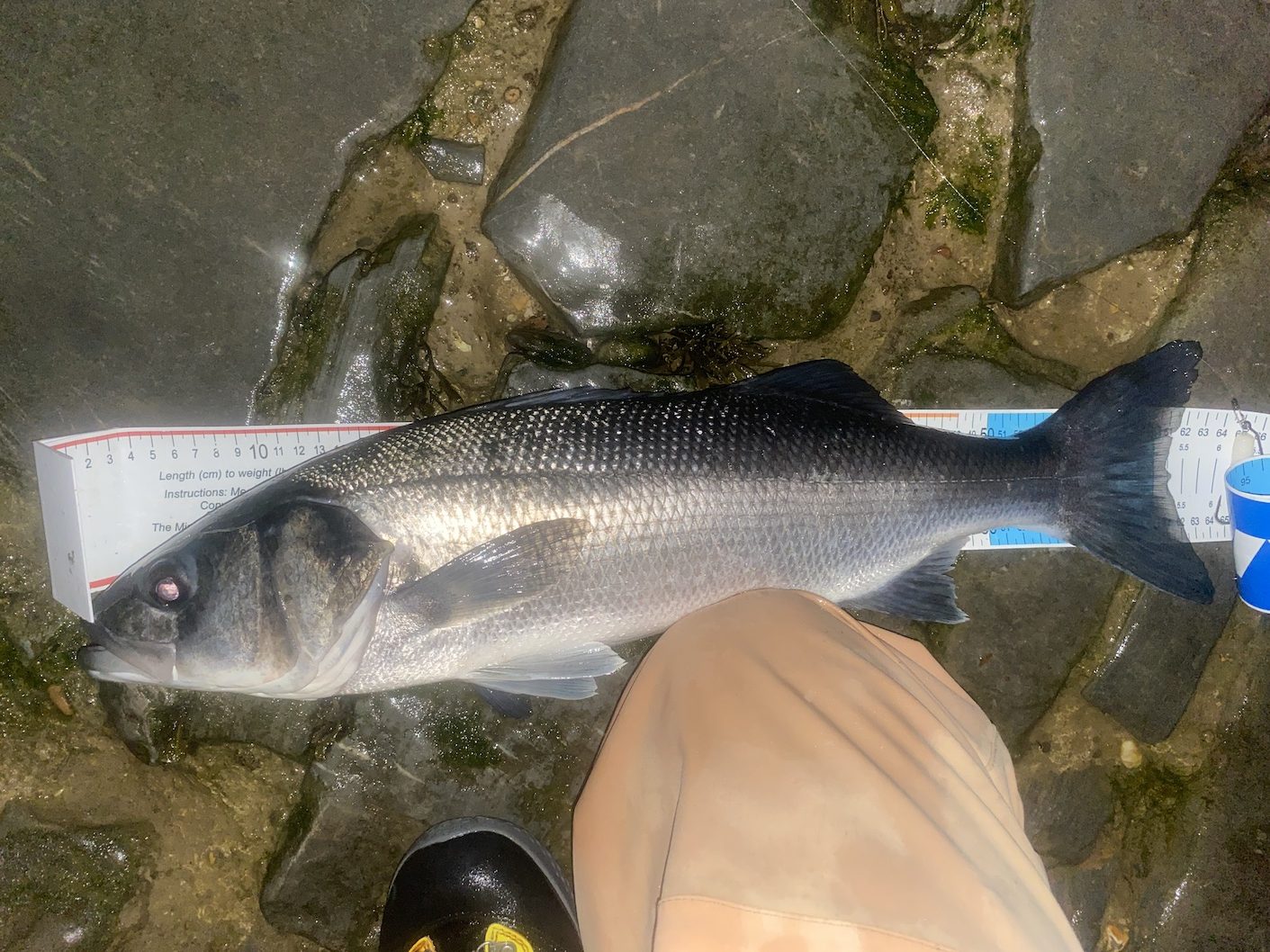
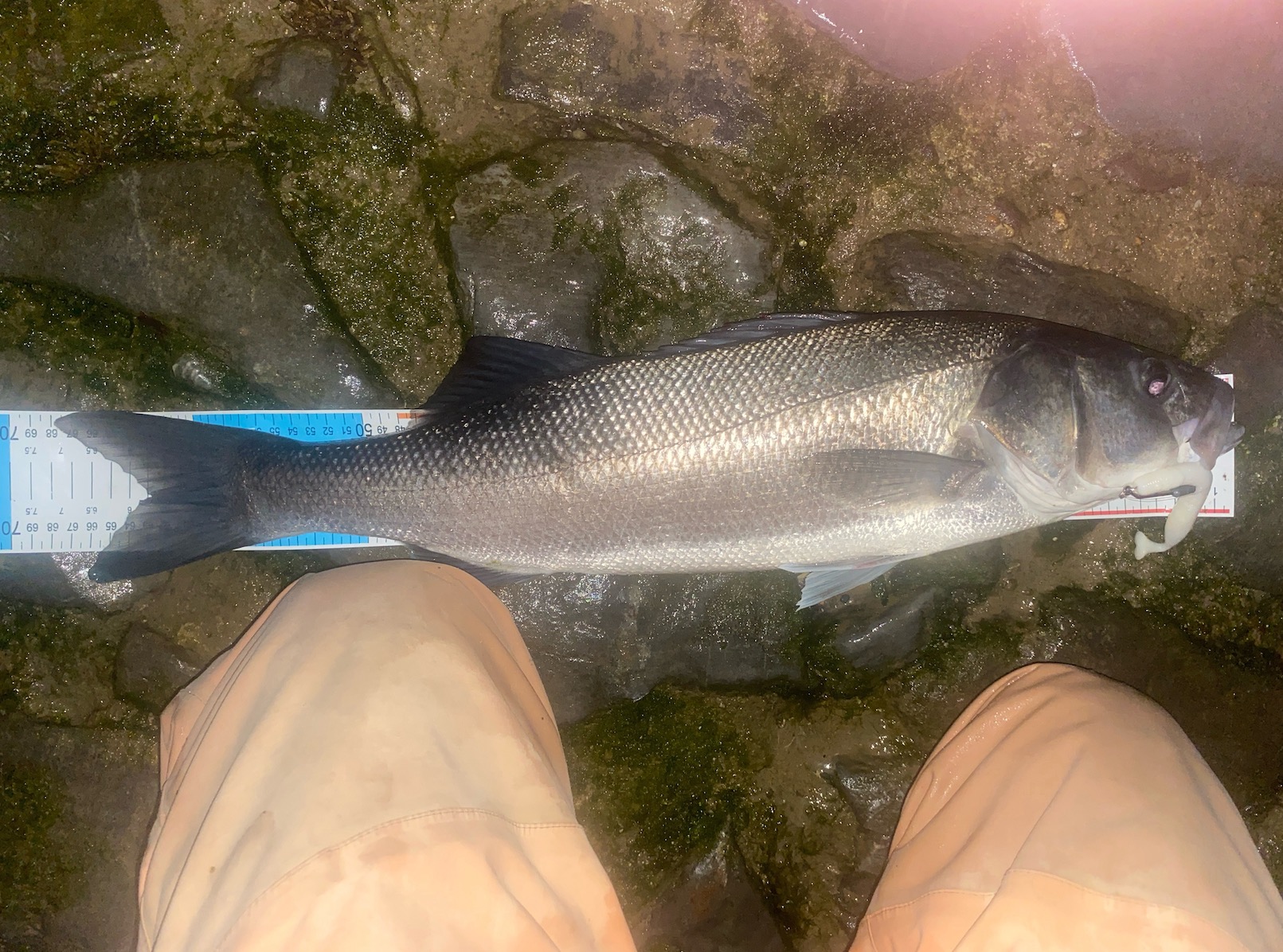
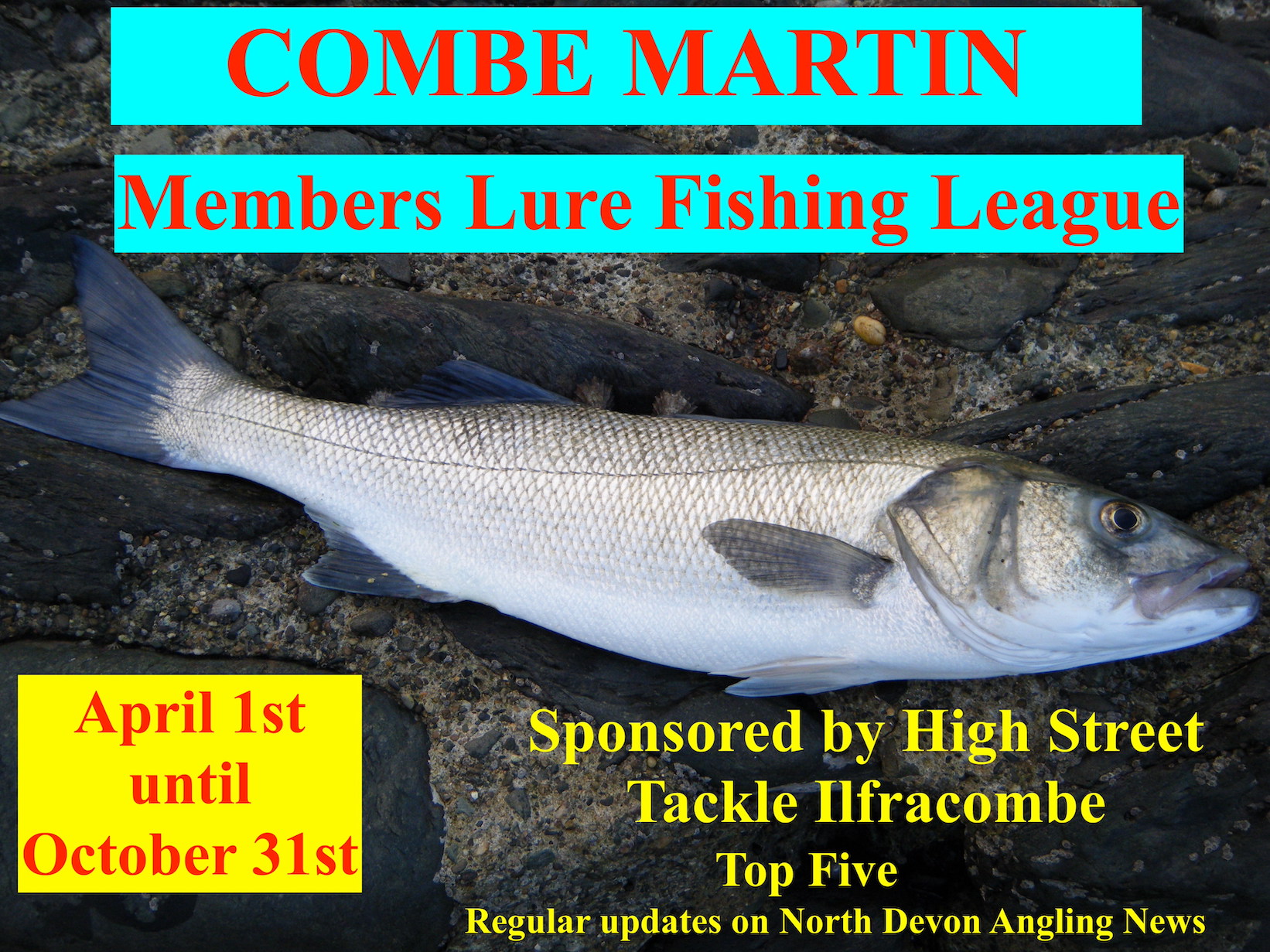
B.D.A.C Rod and Reel match results date 26.5.24 at Tarka. Today the weather was a bit sunny with a few showers and fishing was steady. 1st place today went to Richard jefferies on peg 10 with a weight of 34lbs 8oz mainly carp, 2nd place when to Stephen Paul Sheller on peg 6 with 33lbs 15oz and 3rd place was Keith copland on peg 8 with 23lbs 13oz. The next Rod and Reel match will be on the 23.6.24.
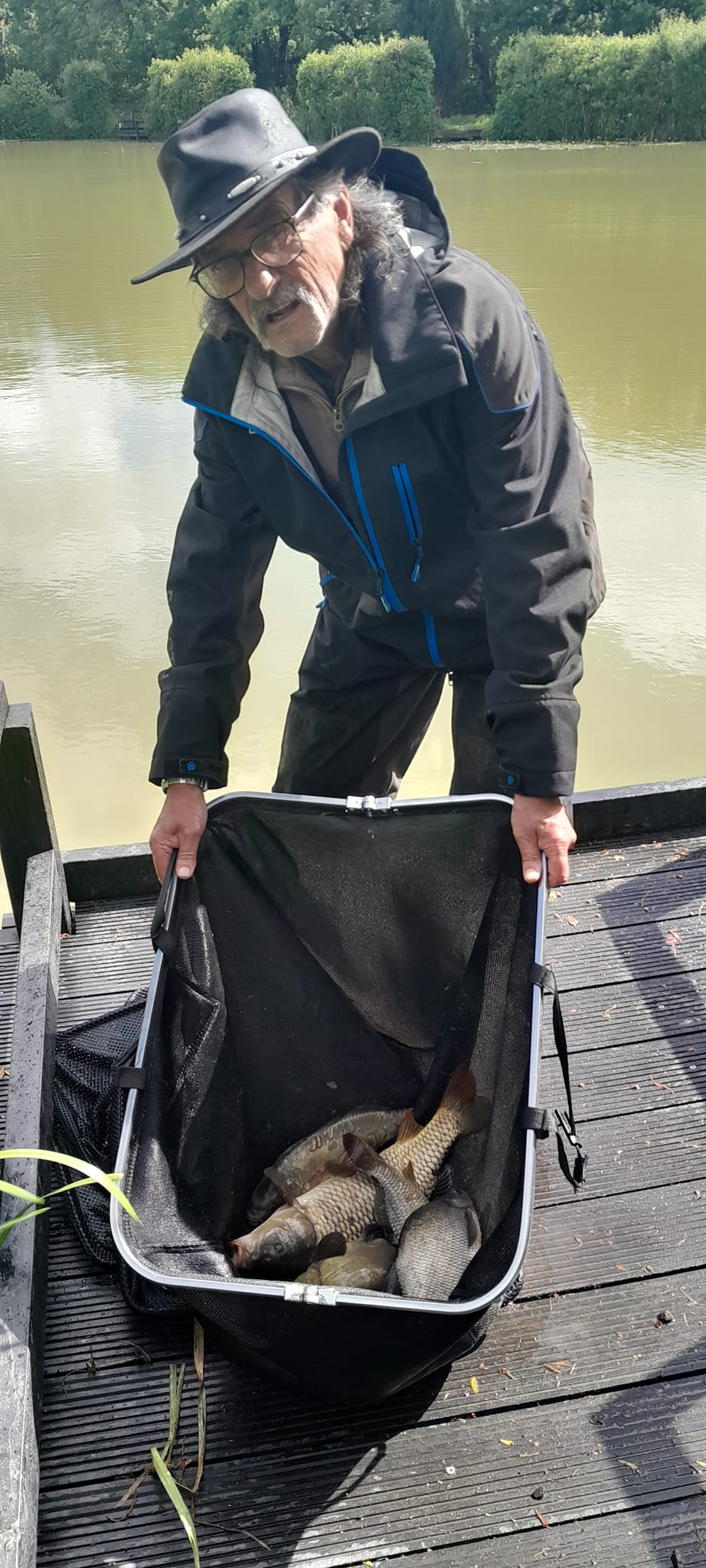
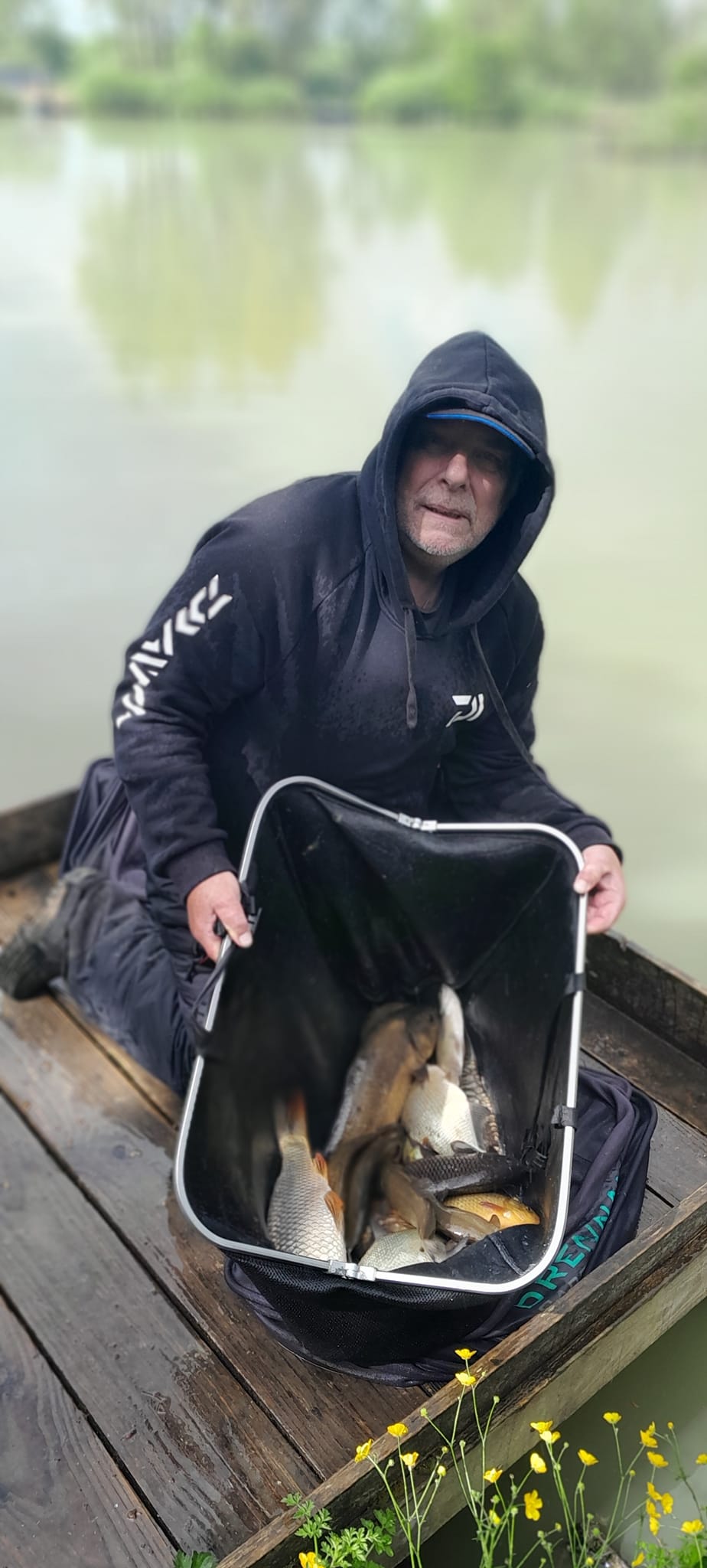
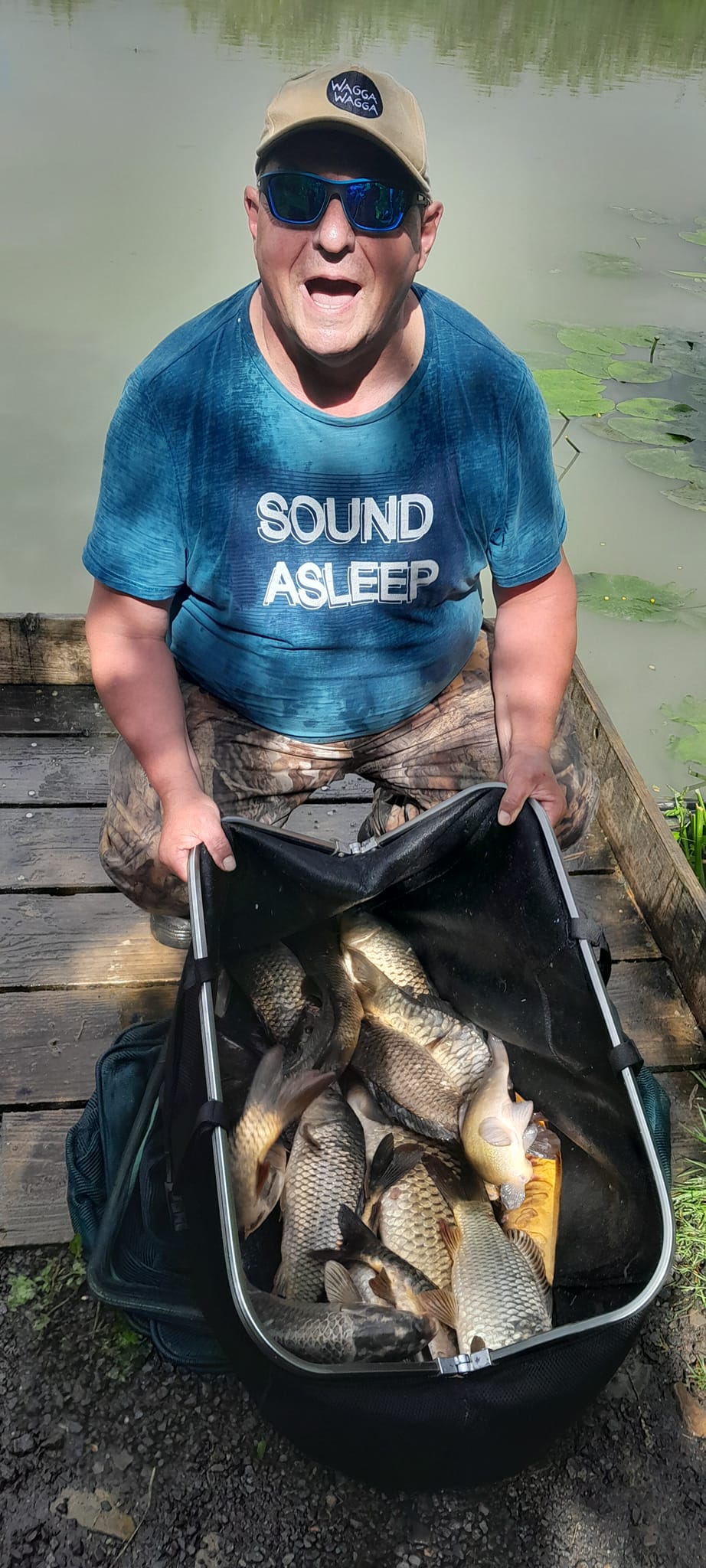
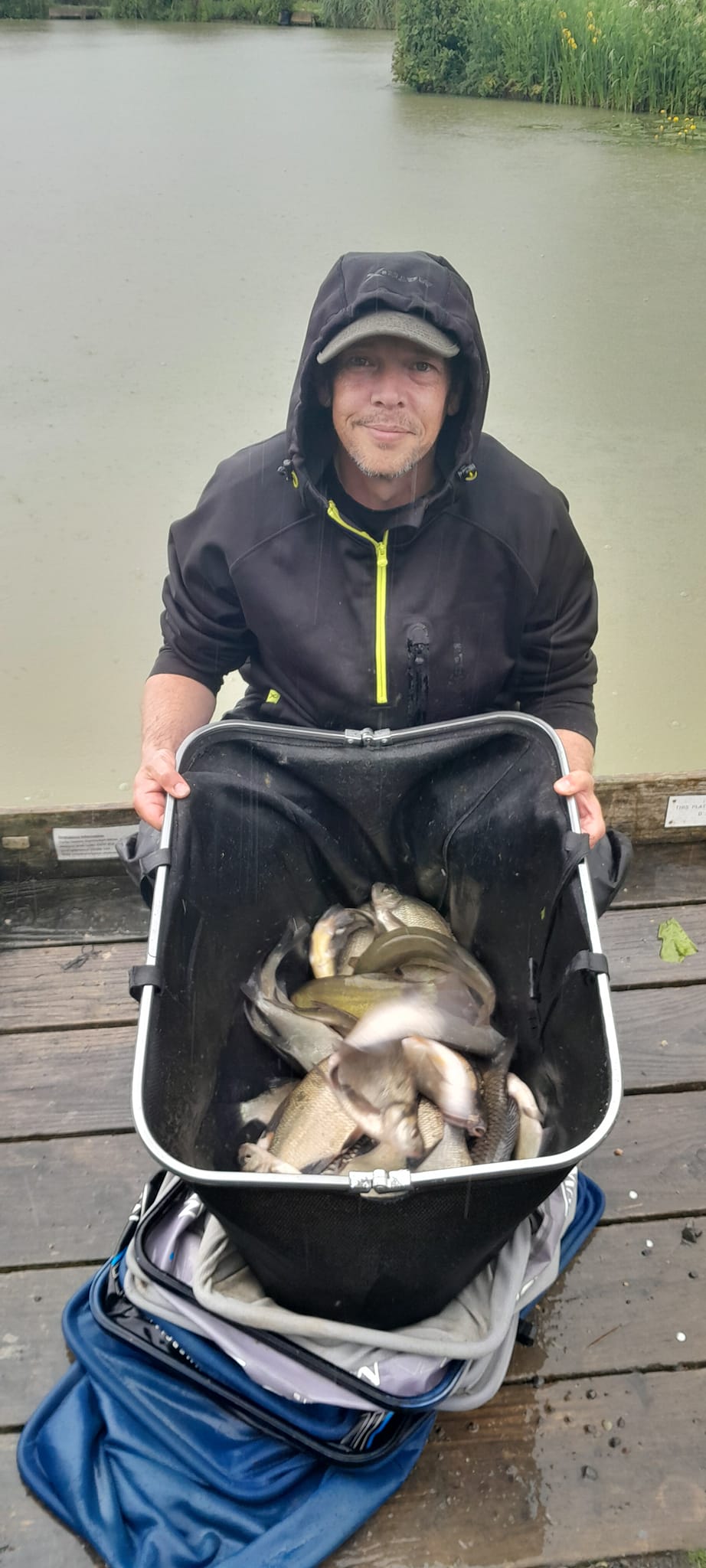
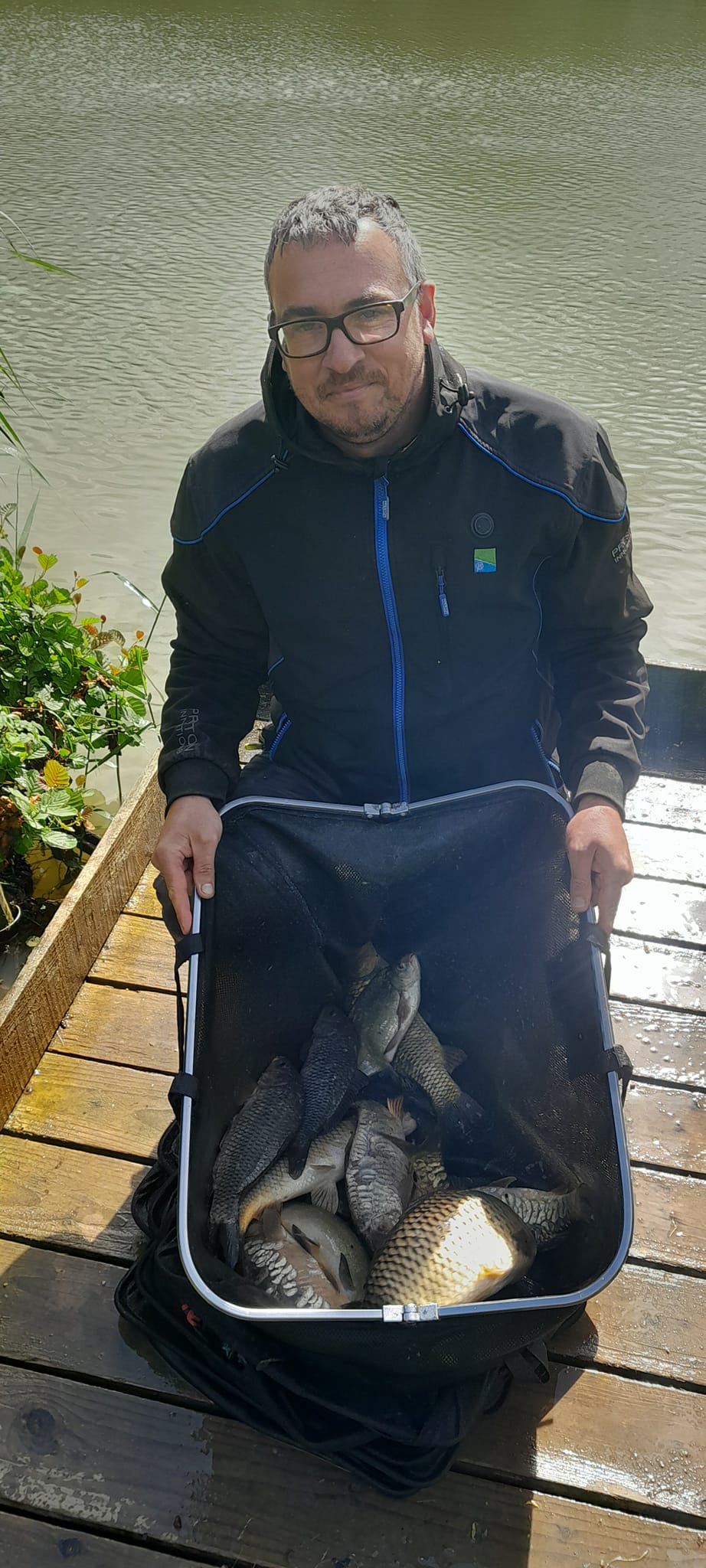
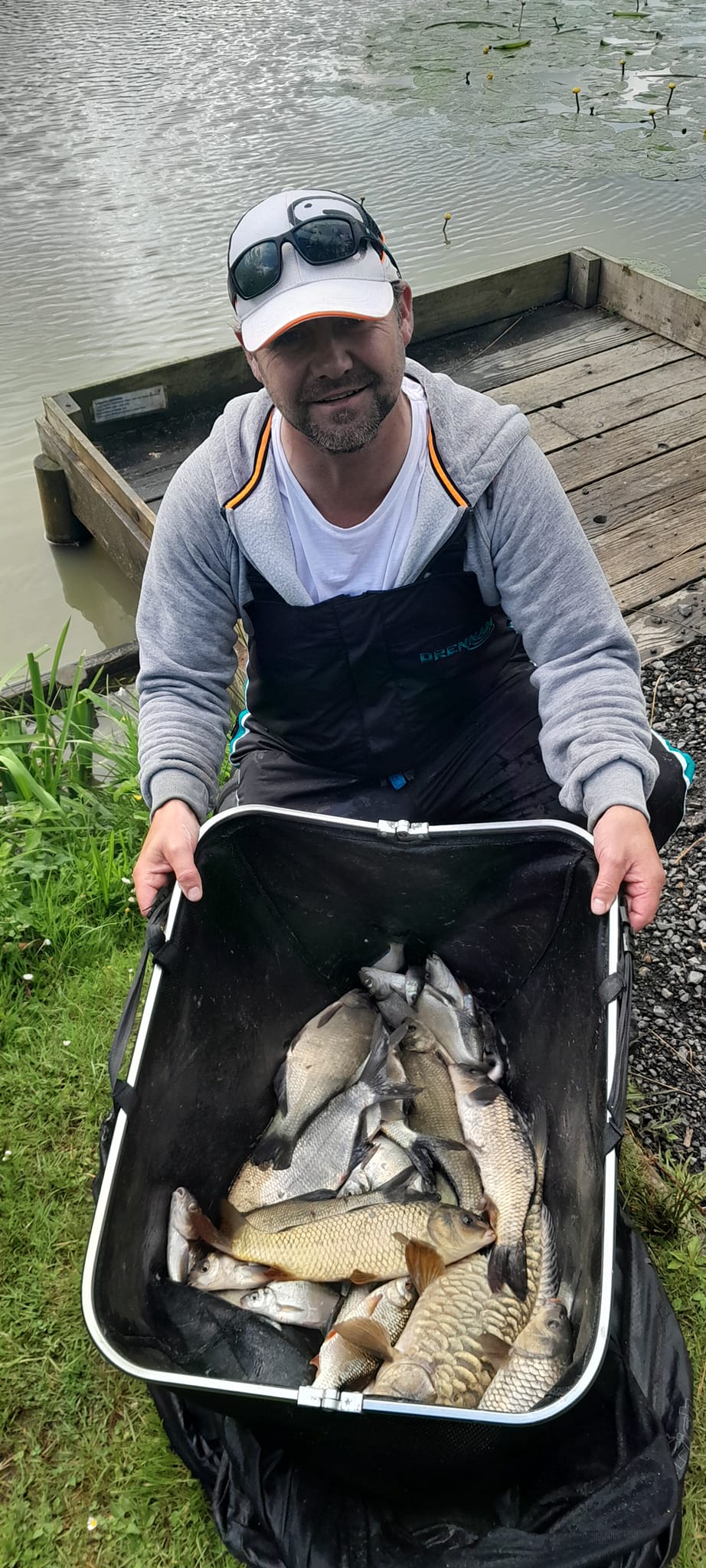
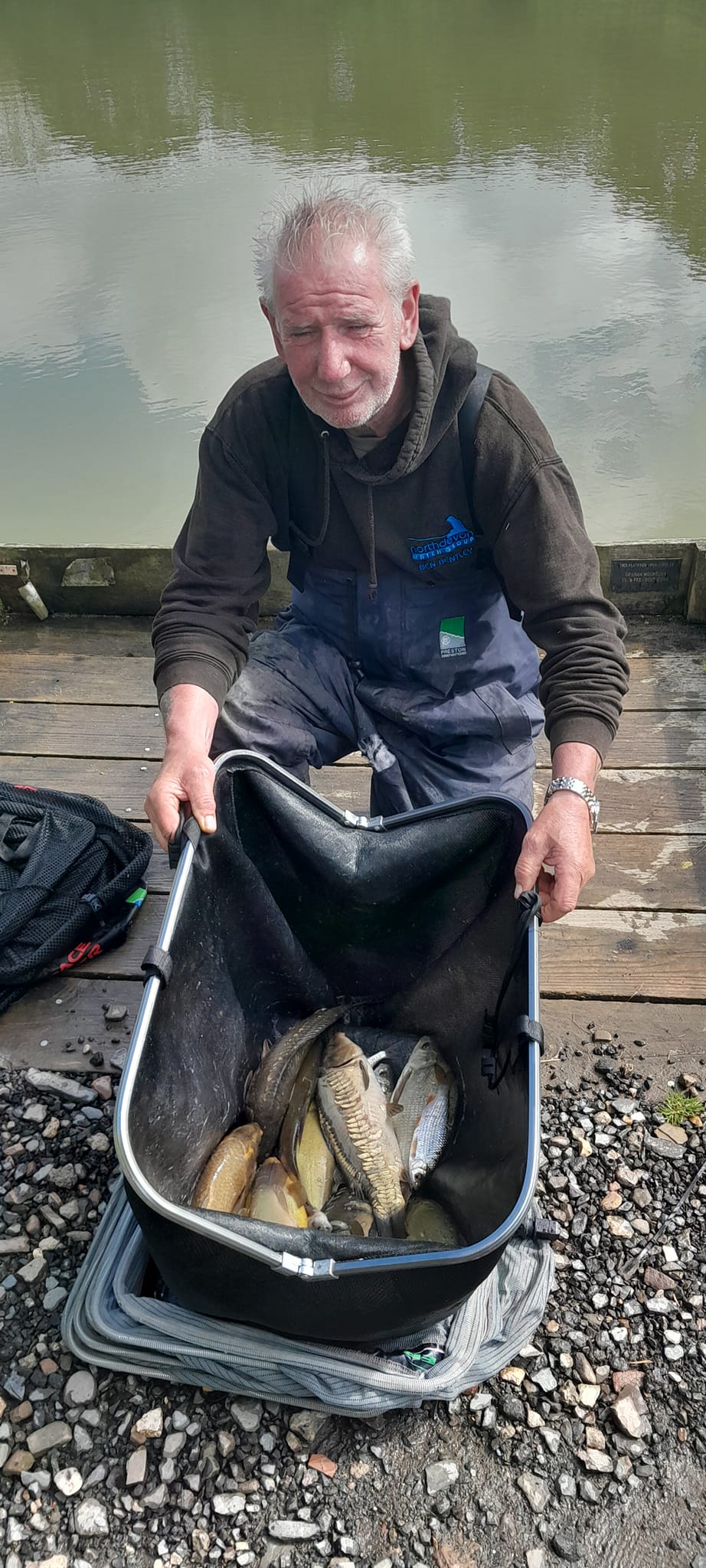


A bar of silver at Little Warham Fishery for Anthony. There is debate as to salmon or sea trout but either way its great to sea a glimmer of silver hope from a beautiful beat on the River Torridge.
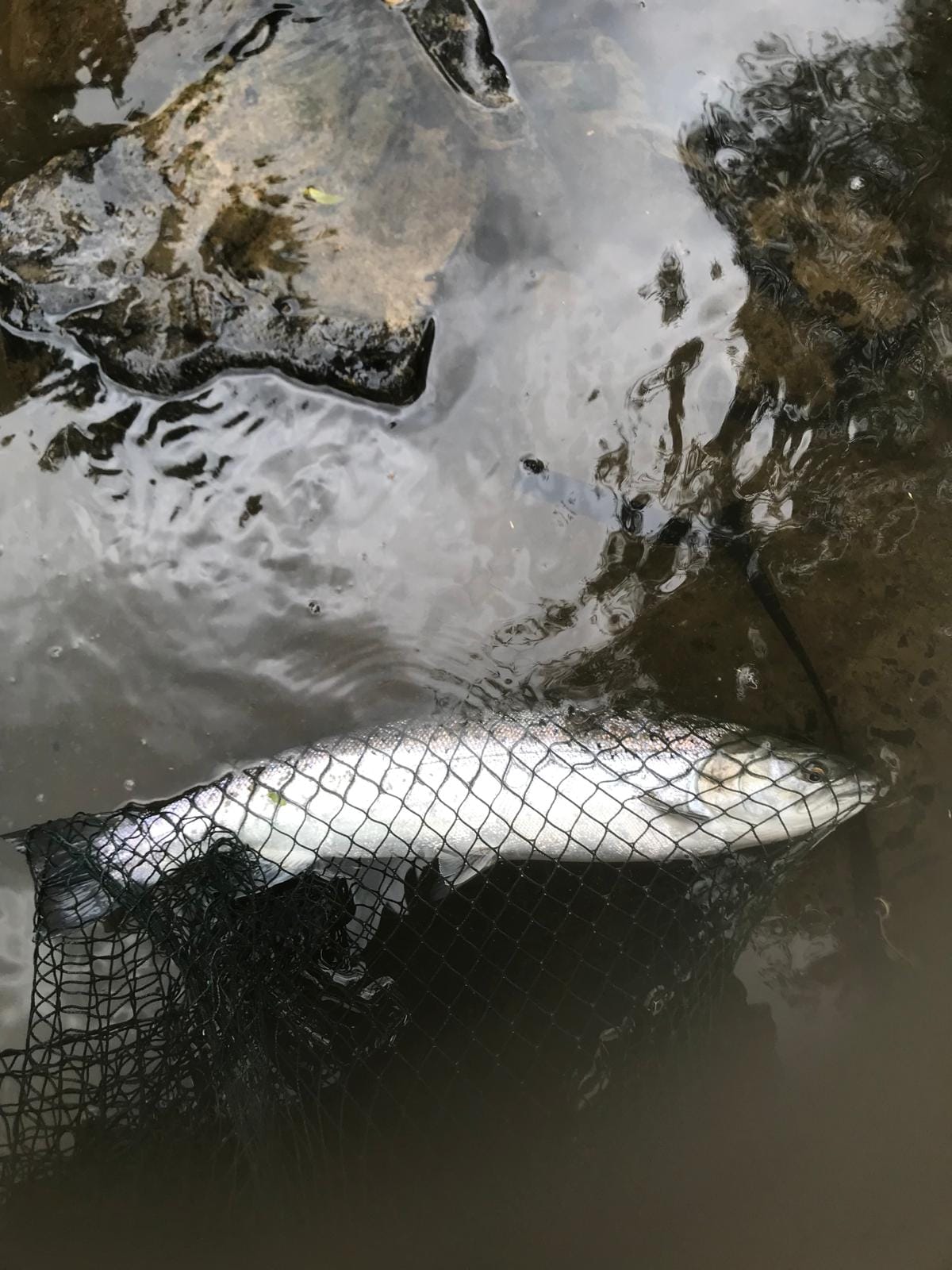
Below is guidance on salmon and sea trout identification from the late great Hugh Falkus. Every fish is different of course and identification is not always clear cut. I remember many years ago catching a silver bar from the Lower Taw, at the time I thought it was a salmon but looking at the photo a few years later I realised that it was a fine double figure sea trout of 10lb 4oz, my personal best.
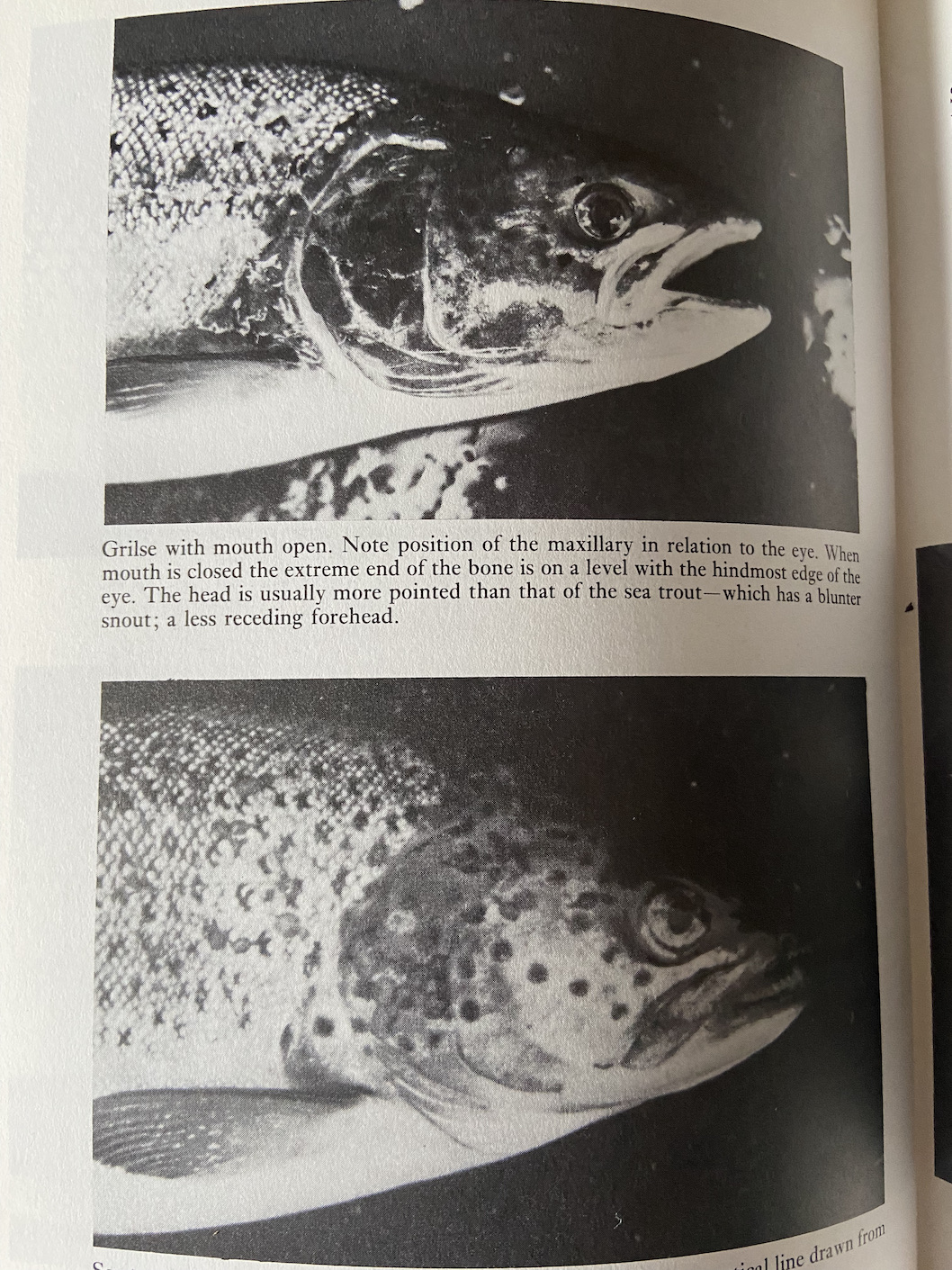

May 2024
As the weather starts to warm, there has been an increase in insect activity, with fish eager to feed either on or below the surface; intermittent thunderstorms and heavy downpours of rain have resulted in some challenging days’ fishing, although this has meant that the reservoirs are still all at top level.
Fishing:
Kennick – Anglers averaged 3.5 fish per rod over the month, with fish well spread out around the lake. Bank anglers enjoyed slightly more success than the boats, with Clampitts, Smithacott, The Dam, The Lawns and Oak Tree Point being particularly popular locations. There were plenty of Hawthorn in the air, which, combined with Sedge and Buzzer hatches, meant that fish were eager to look up to feed, either at or near the surface. In addition to fish rising to dry Hawthorns, Sedges, Hoppers, Black Gnats and Buzzer Emergers on the surface, plenty of fish were taken on subsurface nymph patterns (Buzzers, Diawl Bachs, Damsels and Hares Ears), or deeper fished lures (Wooly Bugger, Black or Yellow Boobies, and Tequila Blobs). Alan Behan (from Plymouth) caught eight rainbows using an Orange Stalking Bug and Black Gnats, while Graham Read (from Christow) caught a bag of six rainbows.
Siblyback – Anglers averaged 4.8 fish per rod in May, with the catch rate improving as the month progressed. Stocky Bay, Two Meadows and the North Bank produced the best sport, and, with Hawthorns and beetles in the air and Buzzers hatching, there was plenty of dry fly action. Popular patterns included Hawthorns, Black Hoppers and Black Beetle patterns, with deeper-feeding fish taking Diawl Bachs, Buzzers, Damsel Nymphs, Montanas and the occasional Boobie. Floating lines with long leaders and a slow figure-of-eight retrieve proved to be the most successful method. Martin Stevens (from Liskeard) caught a bag of seven rainbows (six on dry patterns), while Alex Jackson (from Tiverton) caught a bag of twelve rainbows – fish coming up to dry patterns, with very subtle takes in a cool breeze. The Snowbee Bank Teams of Four competition on 4th May was won by Mark Damarell, Graham Johns, Paul Nottle and Jed Stone, with a bag of 24 fish weighing in at 34lb 9oz.

Burrator – The fishing tailed off slightly from last month at Burrator, with anglers averaging 2.1 fish per rod. Fish were found at all depths in the water column, with floating, intermediate and sinking lines all catching fish. Longstone Bank and Point, Pig Trough and Lowery Bank all produced fish, and with midges hatching, Buzzer Emergers and Hoppers took surface-feeders, while deeper fish were caught on Damsel Nymphs, Buzzers, Black Tadpoles, Orange Blobs and Green Fritz. Harry Duggan caught three rainbows, including a personal best and current season record with a fish of 4lb 4oz, using a stripped Orange Blob while fishing by Sheepstor Dam.

Stithians – The excellent sport at Stithians continued throughout May, with anglers averaging 3.7 fish per rod. Fish were well spread out around the lake, and, with Hawthorns being blown onto the water, there was plenty of dry fly action to be had, with anglers catching on Hawthorns, Black Gnats, Hoppers, Bob’s Bits, Klinkhammers and emerger patterns. Deeper feeding fish were caught on Black and Green Buzzers, Hares Ears, Spiders, Montanas, Cormorants and Orange Blobs. Nigel Burley (from Truro) caught a bag of eight rainbows; Steve Fuller (from Camborne) caught twelve rainbows to 2lb, as well as a Brown, using a self-tied Hawthorn variant and a Griffiths Gnat/Shipmans Buzzer hybrid, fished both stationary and pulled through the surface ripple.
Fernworthy – The warmer weather brought an improvement in the fishing, with anglers averaging 4.1 fish per rod, plenty of which were caught on dry patterns, as fish were eager to feed on the abundant beetles, Hawthorns and emerging midges – Black Hoppers, Black Ants, Black Gnats, Klinkhammers, Hawthorns and Black Sedge patterns fished on a floating line all caught well. Sub-surface feeders were mostly caught on Buzzers, Montanas and Pheasant Tail Nymphs. Popular locations included Boathouse Bank, Thornworthy, Potters Bank and Lawton Bay. Daniel Robson (from Tavistock) caught eight browns to 1lb 4oz, with the best results in the late afternoon; Mark Mcilwane (from Bishopsteignton) caught eleven browns to 1lb 8oz, using a dry Hopper cast to fish feeding on terrestrials.

Colliford – Anglers averaged 3.9 fish over the month, and with Hawthorns in the air, many fish were taken on dry patterns (Bob’s Bits, Hawthorns, Foam Beetles and Claret Hoppers). Other successful patterns included Black Cruncher, Bloodworm, Soldier Palmer, Bibio, Zonker and White-Tailed Zulu. Fish were well spread out around the banks, with the most successful anglers keeping on the move to cover as much bank as possible. Allan Lawson (from Plymouth) caught a bag of eleven browns, with fish taking a Claret Hopper around the bank at Fishery Hut Bay. Dean Boucher (from Gunnislake) caught thirteen browns in one session, pulling wet flies (most takes were on the lift at the end of the retrieve), using Soldier Palmer, Zulu and Zonker patterns, while his best fish of the day (at fifteen inches) took a White-Tailed Zulu.
Roadford – The fishing improved towards the end of the month, by which time anglers were averaging 4.8 fish per rod, with the best fishing to be had at Gaddacombe and the East Bank. Floating lines were the order of the day, with a variety of retrieval methods. Rodney Wevill (from Lifton) caught seven browns to 2lb, using Soldier Palmer, Mini Scruffy Tiger and Beaded Blue Zulu patterns on a floating line with a medium retrieve. Alex Jackson (from Tiverton) caught seven browns to 2lb, using an Olive Damsel on the point, and a Soldier Palmer fished on the dropper.
Please see the Trust’s website (www.swlakestrust.org.uk/trout-fishing) for more information on buying tickets, boat availability and booking, and forthcoming events. The Trust will be offering beginners’ taster days at Roadford, Burrator, Stithians and Kennick throughout the season, assisted by local experienced guides and instructors. The Trust, in conjunction with Fluff Chuckers, will be running a Brown Trout Masters competition this season, to be held over three dates at Colliford, Fernworthy, and Roadford – please see the website for more information.
Chris Hall (May 2024)
ENDS
For more information, please contact:
Becky Moran
Head of Communications and Marketing
South West Lakes Trust
01566 771930